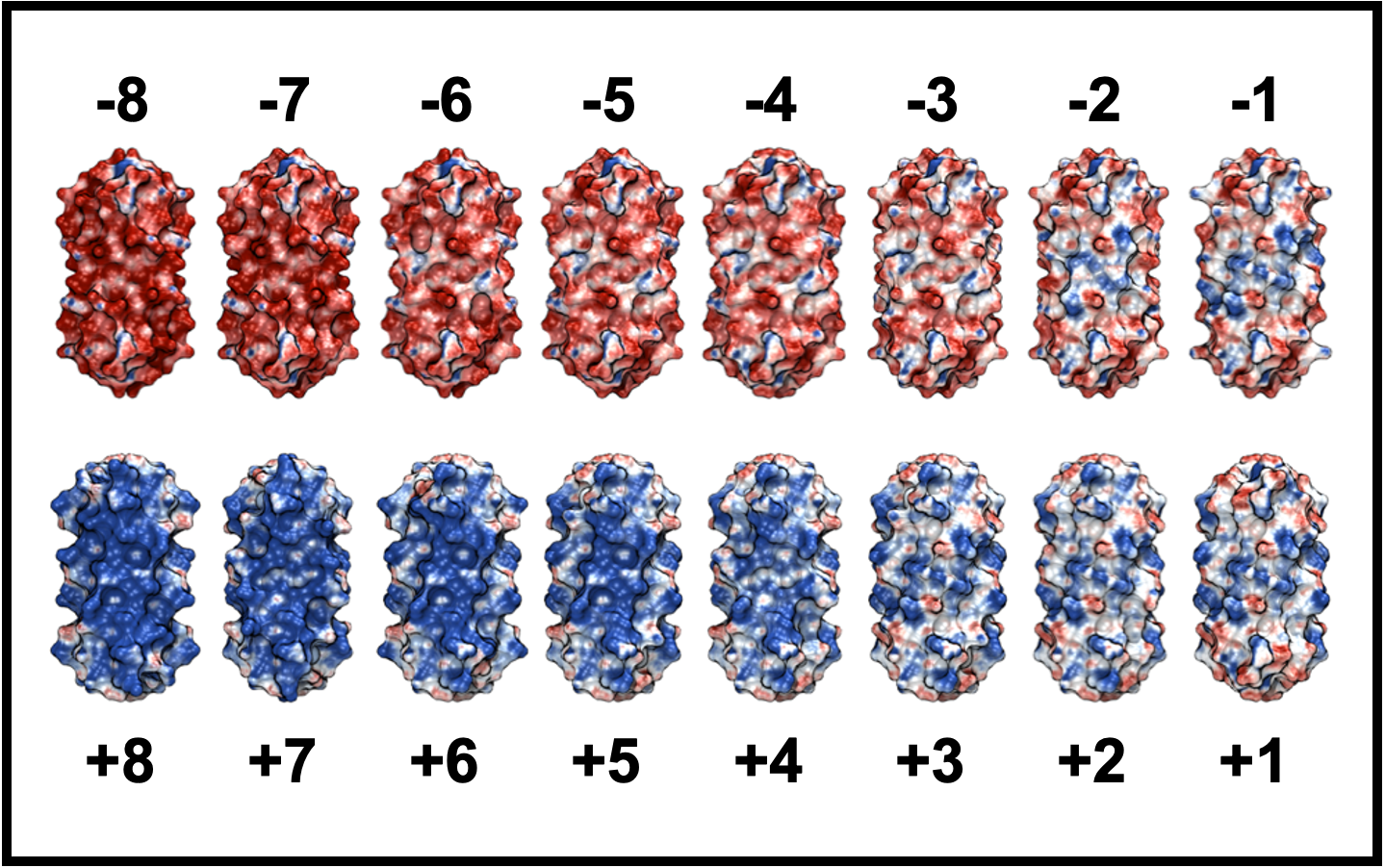Computational Design of Tetrahelical Peptide Bundle Variants Spanning a Wide Range of Charge States
 Research Focus
Research Focus
- A homotetrameric helical bundle was computationally designed to have a variety of net charges.
- The charged bundle variants showcase how charge state can be controlled for a common peptide structure, as well as the properties of the fibril nanomaterials constructed by the peptide building blocks.
Key Advances
- A probabilistic peptide design algorithm was applied to identify peptide sequences with putative charge states spanning -8 to +8 for a tetrahelical backbone.
- The peptides folded as designed despite the drastic variation of exterior charges, confirmed by experimental studies: circular dichroism, analytical ultracentrifugation, and small-angle neutron scattering spectra.
- Highly negative peptides (sequence net charge from -8 to -4) were less thermally stable with lower melting temperatures.
- One dimensional nanofibrils constructed by positive peptides and negative peptides showed different morphologies under transmission electron microscopy.